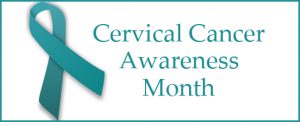What Everyone Should Know About Cervical Cancer

About 13,000 new cases of invasive cervical cancer will be diagnosed this year and around 4,000 women will die from it. Since roughly 99 percent of cervical cancers are caused by the human papillomavirus (HPV), the good news is that it can go the way of smallpox and polio with vaccinations.
“Girls and boys should get the HPV vaccine as a series of shots. Vaccination works best when it is done before a person is sexually active and exposed to HPV, but it still can reduce the risk of getting HPV if given after a person has become sexually active. The ideal age for HPV vaccination is age 11 years or 12 years, but it can be given starting at age 9 years and through age 26 years,” the American Congress of Obstetricians and Gynecologists says.
“There are more than 150 types of HPV. About 40 types infect the genital area of men and women and are spread by skin-to-skin contact during vaginal, anal, or oral sex. Genital HPV infection can occur even if you do not have sexual intercourse. Almost everyone who is sexually active will get an HPV infection at some point during their life,” ACOG says.
It’s important to note that often our immune systems fight off HPV and like many other infections it clears our bodies before we even know we had it.
Women who haven’t received the HPV vaccine should have regular screening tests. “Cervical cancer that is detected early is more likely to be treated successfully,” the Mayo Clinic says. “Most guidelines suggest that women begin screening for cervical cancer and precancerous changes at age 21.”
Early stage cervical cancer typically has no signs or symptoms, so having a regular examination by your primary healthcare provider is important. Advanced cervical cancer symptoms may include vaginal bleeding after intercourse, between periods or after menopause; watery, bloody vaginal discharge that may be heavy and have a foul odor, or pelvic pain or pain during intercourse.
What will your PHP do? Give you a Pap smear. “During a Pap test your doctor scrapes and brushes cells from your cervix, which are then examined in a lab for abnormalities,” Mayo explains. “A Pap test can detect abnormal cells in the cervix, including cancer cells and cells that show changes that increase the risk of cervical cancer.”
Women who are 30 and over or younger women who’ve had an abnormal Pap test should have a HPV DNA test. “This test involves testing the cells collected from the cervix for infection with any of the types of HPV that are most likely to lead to cervical cancer,” Mayo explains.
The American Sexual Health Association and the National Cervical Cancer Coalition, both non-profit organizations, put together a booklet of true stories. I want to share one of the stories with you. It was written by a woman named Christine.
“It happened to me. I never thought it would. I was 31 years old when I went in for my Pap – just like I did every year for 13 years. This time it was different. My doc had me come back for a ‘closer look’ with a colposcopy, then he took a few pieces to be biopsied, and then I got the phone call – invasive cervical cancer.
“Ten days later I was having a hysterectomy. One month later I was having a laparoscopic surgery to move my ovaries up and out of the soon to be frying zone. A week after that I started five weeks of daily pelvic radiation concurrent with four rounds of chemotherapy. After that I had three rounds of internal radiation. Then I was done.
“I was sad and mad and confused. I started asking questions and got the answers. Cervical cancer is preventable! Talk to your doctor. Get the best Pap available. Get your HPV test if you are 30+. And (now!) boys and girls, get the HPV vaccine. This is a cancer we CAN stop. We KNOW what causes it and we have PREVENTION and DETECTION tools. All we have to do is use them.”
I couldn’t say it better. Have a happy, healthy New Year!
Kathy Hubbard is a member of Bonner General Health Foundation Advisory Council. She can be reached at [email protected].
